Is an FUE Hair Transplant Painful? A Real-Life Patient Answers Your Questions
17th May 2017
A common question we are asked by prospective patients considering a follicular unit extraction (FUE) hair transplant is whether it will be painful.
The scalp is numbed by local anaesthetic injections, so there should be no pain during an FUE hair transplant procedure. Patients do tend to experience some discomfort during the initial anaesthetic injections, but we use a number of effective techniques to make this process as comfortable as possible.
Prople often worry that the healing period will be painful. In fact, most of our FUE hair transplant patients are very surprised to find that they do not even need to take painkiller tablets within a day or two of their procedure.
At The Maitland Clinic we are very keen to educate and support our FUE patients so that their aftercare period is as simple and comfortable as possible. We know that a huge amount of emotional and financial investment has gone into a hair transplant procedure and so we share our patients’ concern for the wellbeing of their precious new FUE grafts.
We provide all the medication and healing products that are needed after surgery and keep in close contact to offer advice and support.
The Maitland Clinic is fortunate in that both our lead surgeon, Dr Edward Ball, and our senior patient advisor, David Anderson, have themselves had surgery. This means they can answer any questions, from a first hand perspective, about any pain involved with an FUE hair transplant.
We decided to pick David Anderson’s brains, since he has recently undergone FUE surgery in our clinic. What follows are his own personal thoughts on FUE hair transplant pain.
Is an FUE Hair Transplant Painful?
“I first had hair transplant surgery in 1998, using the follicular unit transplant (FUT) or strip technique. Back in those days the procedure involved removing a piece of hair-bearing skin from the donor area of the scalp and transplanting the dissected grafts to the areas suffering from hair loss.
These FUT (or strip) transplants left three linear scars on the back of my head which I can conceal with hair worn about grade 4 or longer. This strip technique is still a great option for patients who don’t want to shave their hair or who need very large numbers of grafts to cover extensive hair loss.
Fast forward to present day and due to my role as senior patient advisor at The Maitland Clinic, I decided that I would like to undergo an FUE procedure to add some density to my crown and to cover some of the scars from the previous FUT transplant surgery. It also gave me the opportunity to share my experiences from my FUE journey, which you can read more about here.
The first part of the FUE procedure at our Portsmouth hair loss clinic involved Dr Ball numbing my scalp by injecting the local anaesthetic. His assistant held a vibrating massager near to where the needle was going which did a great job of making the injection process more comfortable. He then extracted a few grafts to assess their size and quality, before making the incisions which would determine their new home in my crown and old FUT scars.
Next came the proper extraction stage, where I lay on my frontal while Dr Ball removed all the grafts using a hand-held rotating punch device. With good music and a bit oif a snooze, the time passed fairly quickly.
I needed several top-up injections to keep my scalp numb but these were more comfortable that the initial injections because the areas were already pretty numb by then.
The final stage was very relaxing, while Dr Ball and our team of technicians placed all the grafts into the pre-made recipient sites (while I flicked through Apple TV).
When Dr Ball performs FUE hair transplants, he is constantly in dialogue with his patient, asking how they feel, making sure they are not too hot, too cold or feeling any pain. I found this really reassuring and, strangely, the whole day was rather relaxing.
I must admit that the numbing injections were not something I would choose to have in a hurry. When he was injecting me, Dr Ball would ask what it felt like on a scale of 1 to 10 (with 10 being really nasty). The anaesthetic injections were probably around 2-6 on this scale, but they were definitely helped by using the vibrating massage tool. The actual FUE hair transplant procedure, itself, was totally pain-free.
As part of my FUE hair transplant, Dr Ball had also suggested that we could extract beard hairs from underneath my chin to transplant to the crown. This was a part of the procedure that I was a little bit nervous about as it would involve injections in the chin and neck area.
Dr Ball used a topical numbing cream before the injections and surprisingly (to me at least) there was minimal pain, and it was all over very quickly.
Once my day in surgery was complete, I was able to go home and get some more sleep. As with all patients who visit The Maitland Clinic, I was given a post-op aftercare bag which included a neck pillow, shampoo, ointment for the donor areas, antibiotics, painkillers, anti-inflammatory tablets, and ATP graft healing spray.
All patients receive this pack as standard, as well as being able to call the team or pop back to the clinic at any point for advice or support.
In terms of the recovery period, I will be uploading videos to our YouTube channel soon, but in the meantime here are some photos so you can see how I have been getting on. I have had a really good recovery period, and healed very quickly with little or no pain in the following days.”
Contact Us if You Are Considering FUE
Should you wish to talk to us about FUE hair transplants then please contact us. We perform all hair transplants from our Portsmouth clinic, and can also offer consultations from our south coast location.
It would be our pleasure to arrange for you to meet David Anderson, our senior patient advisor, who shared his experiences in this blog post.











